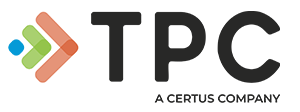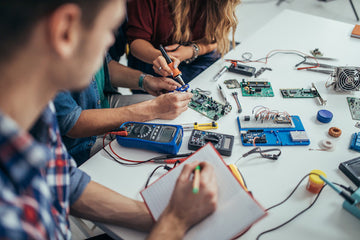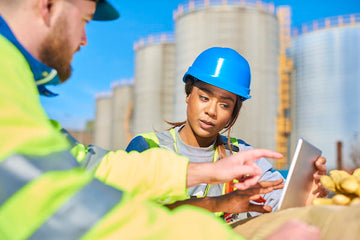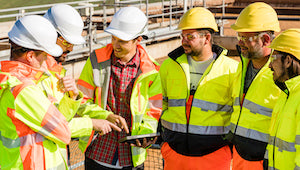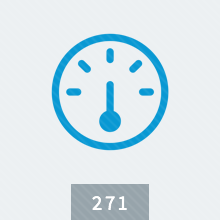This online course covers the function of basic devices for measuring and controlling different kinds of variables in process control. Introduces closed-loop control and PID functions. Introduces maintenance of analog and digital devices and programmable logic controllers (PLCs). ISA and SAMA instrumentation symbols and interpretation and use of process diagrams are covered. This course has no prerequisites. Introduction to Process Control is available in online technical training and course manual formats.
TPC Training Systems is authorized by IACET to offer 0.6 CEUs for this program.
Review a full course list for Instrumentation & Control Systems Technician
Lesson 1 - The Nature of Process Control
Topics:
Process variables; On-off control; Measuring data; Controlling variables, Error and feedback; Open- and closed-loop control
Learning Objectives:
– Define setpoint and error.– Explain how measurement and control are related in industrial processes.– Describe the four essential functions of an automatic control system.– Discuss the functions of the CRT and PLC in control systems.– Identify variables in industrial processes.– Explain the importance of feedback in a closed-loop control system.
Lesson 2 - Elements of Process Control
Topics:
Analog and digital control signals; ASCII; Measuring pressure, level, and flow rate; Digital pulse control; System terminology; Controller action
Learning Objectives:
– Discuss the differences between modern automatic control systems and older ones.– Identify the standard signals used in process control.– Define the terms commonly used in control terminology.– Explain the differences between open-loop control and closed-loop control.– Describe on-off, proportional, integral, derivative, and PID controller action.
Lesson 3 - Process Control Signals
Topics:
Linear and nonlinear transducers; Signal operating values; Error; Controller output; Pneumatic and electrical signal transmission; Control loops
Learning Objectives:
– Discuss standard signals and linearity and explain how to calculate the value of a variable from an instrument's span and range.– Describe five common sources of error in signal measurement.– Discuss the basic principles governing pneumatic signal transmission and explain how a flapper-nozzle device works.– Describe the function of the controller in a control loop.– Discuss the basic principles governing electrical signal transmission, including Ohm's law, and list standard current and voltage signals.– Explain the function of I/P devices in a typical control system and discuss the use of digital signals and optical signals.
Lesson 4 - Process Measurement Fundamentals
Topics:
Measurement and display requirements; Remote and local display; Calibration; Noise; Response time; Measurement system and observation error
Learning Objectives:
– Explain why measurement is necessary and discuss conditions that affect the degree of accuracy required.
– Compare the advantages of linear and nonlinear displays.
– Compare analog and digital devices and explain how each is applied to measurement.
– Name five sources of measurement error.
– Discuss proportionality and explain how it applies to transmitters.
Lesson 5 - Principles of Transducer Operation
Topics:
Outputs; Mechanical, electrical, and pneumatic elements and response; Resistance, voltage, and frequency devices; Combining elements
Learning Objectives:
– Discuss the need for linearity in a process.
– List examples of mechanical and electrical transducer elements.
– Compare pneumatic response and electrical/electronic response in transducers.
– Describe the operation of the bourdon tube, bellows, and diaphragm.
– Name examples of resistance, voltage response, frequency response, and electromechanical devices and explain how they work.
– Discuss the use of the Hall-effect transducer and the differential transducer.
Lesson 6 - Basic Process Measurement Systems
Topics:
Interaction of system elements; Transmitters; Electrical vs. pneumatic output; Converters; Signal conditioning; Indicators and recorders
Learning Objectives:
– Discuss the basic elements of measuring systems and explain how they interact.
– Describe how a physical quantity is translated into another quantity.
– Discuss the use of transmitters to relay information from one location to another and explain the transfer function.
– Describe the operation of at least five kinds of converters.
– Compare analog and digital indicators and recorders.
